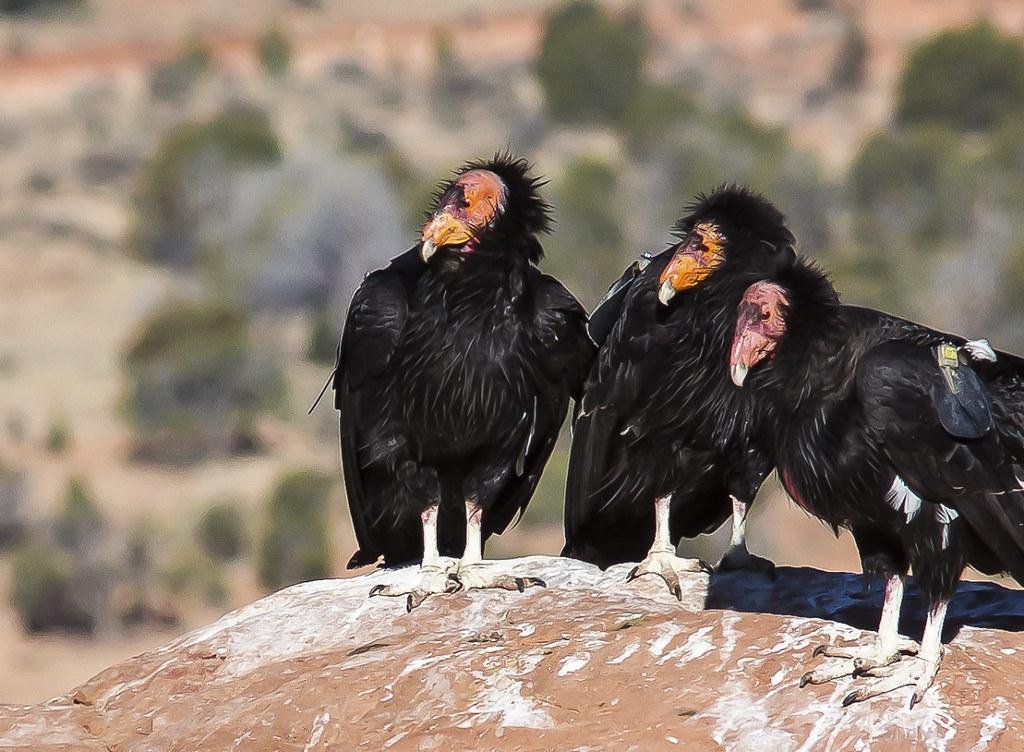arizona
California Condor Makes a Stunning Comeback!

The revitalization of the California condor population is making strides in Baja California, Mexico. In the cool spring air of the Sierra de San Pedro Mártir National Park, the majestic bird soars, its 9.8-foot wingspan casting shadows over the forest. Here lies the southernmost habitat of the California condor (Gymnogyps californianus), where reintroduced populations are gradually making a comeback in the wild.
Over the past two decades, biologists Juan Vargas Velasco and María Catalina Porras Peña have dedicated their lives to protecting these birds. They transitioned from urban comforts to the rugged wilderness, managing a flock of 48 condors. Their efforts trace back to recovery initiatives that emerged in the U.S. during the 1980s, stemming from the population’s alarming decline due to ingested lead bullets from hunting.
In Mexico, the California condor disappeared from the skies as early as the 1930s. However, captive-bred condors made their return in 2002, thanks to a collaborative effort between institutions in both the United States and Mexico. Porras Peña not only tracks each bird’s ID but also intimately knows their histories and behaviors, treating them like close friends. This dedication is documented in an elaborate database that includes vital statistics and individual characteristics of each condor.
Scientific advancements have been crucial in supporting the recovery of this iconic species. Biologists have gained insights into the condor’s genome and its reproductive patterns. Recent data revealed that the California condor, which once dominated western skies, faces challenges in establishing self-sustaining populations. A collaborative approach to conservation now spans across California, Arizona, Utah, and various regions in Mexico.
One significant turning point in the fight for survival came in the 1970s with the establishment of the U.S. California Condor Recovery Program. In a drastic decision to save the species, the last wild condors were captured, leading to a breeding program that generated hope for recovery. By 1988, the first captive-bred condor chick was born, showcasing the program’s initial successes.
Since then, a variety of techniques have emerged to enhance breeding effectiveness. For example, researchers utilize double and triple clutching, enabling condors to produce additional eggs if initial ones are lost. Artificial incubation methods and puppet-rearing have helped ensure that newly hatched chicks bond with their species rather than humans, aiding their future integration into the wild.
By the end of the 1990s, breeding efforts had spread to several additional locations. In 1999, formal agreements between U.S. and Mexican organizations facilitated the federal reintroduction of California condors into Mexican territories. The population continued to grow, from just over 20 in the early 1980s to 561 individuals globally by 2023.
Genetics have become an essential ally in the effort to restore these birds. Detailed DNA sampling and analysis have helped identify crucial information, such as inherited diseases, which could hinder population growth. Surprisingly, researchers discovered instances of parthenogenesis—female condors reproducing without male fertilization—an unprecedented development in avian biology.
However, lead poisoning remains a critical threat to the California condor population. Between 1992 and 2023, nearly half of recorded condor deaths were attributed to lead exposure, primarily after ingesting fragments from animal carcasses. Despite efforts to ban lead ammunition in hunting and provide educational resources, the problem persists. In Baja California, conditions are somewhat better, reducing lead-related deaths to around 7.7 percent.
The survival of the California condor hinges on overcoming several challenges. A self-sustaining population must adapt to environmental fluctuations and prevent inbreeding through careful monitoring and management strategies. As of now, integration programs remain necessary for newly released condors, underscoring the ongoing dependence on human intervention.
Efforts continue across multiple regions to track released condors via GPS. Monitoring allows biologists to ensure the birds find food and water while adapting to their wild surroundings. The costs of this project are significant; each GPS device alone costs around $4,000, along with ongoing expenses for veterinary support and feeding during the initial reintroduction phases.
In Mexico City, the Chapultepec Zoo plays a critical role in breeding programs that support the species’ recovery. Since 2002, the zoo has contributed to reintroduction efforts, and their facilities allow for safe breeding and care of condors before they are released into the wild.
A recent incident at a pre-release aviary highlighted the ongoing risks faced by condors. A puma attack claimed the life of one bird, emphasizing that human efforts cannot fully shield these creatures from natural threats. The fight for the California condor is complex, rife with both triumphs and tragedies, showing that while it’s possible to recover a population, nature’s unpredictability remains a constant challenge.


















